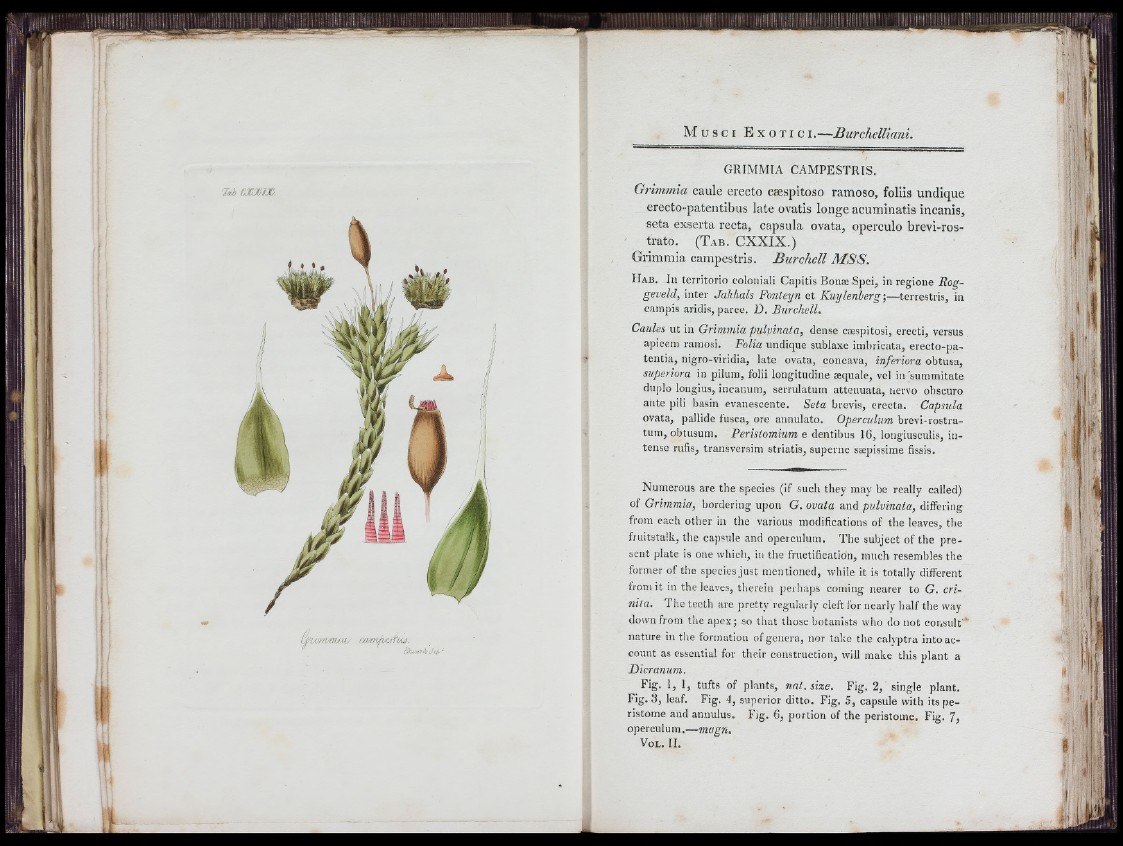
J
i ::
i i)
l i
■7a), c x x m
amfuAVá
('jiu/iifliij j'r/c ’
• L i
\l i
ié.
GRIMMIA CAMPESTRIS.
Grimmia caule erecto cæspitoso ramoso, foliis undique
erecto-patentibus late ovatis longe acuminatis incanis,
seta exserta recta, capsula ovata, operculo brevi-ros-
trato. (Tab. CXXIX.)
Grimmia campestris. Burchell M S S .
Ha b . Ill territorio coloniali Capitis Bonæ Spei, in regione Rog-
geueld, inter Jakhals Foiiteyn et Kuylenlerg -,—terrestris, in
campis aridis, parce. D . Burchell.
Caules ut in Grimmia pulvinata, dense cæspitosi, erecti, versus
apicem ramosi. Folia undique sublaxe imbricata, erecto-patentia,
nigro-viridia, late ovata, concava, inferiora obtusa,
superiora in pilum, folii longitudine æquale, vel in summitate
duplo longius, incanum, serrulatum attenuata, nervo obscuro
ante pili basin evanescente. Seta brevis, erecta. Capsula
ovata, pallide fusca, ore annulato. Operculum brevi-rostra-
tum, obtusum. Peristomium e dentibus 16, longiusculis, intense
rufis, transversim striatis, superne sæpissime fissis.
Numerous are the species (if such they may be really called)
of Grimmia, bordering upon G. ovata and pulvinata, differing
irom each other in the various modifications of the leaves, the
fruitstalk, the capsule and operculum. The subject of the present
plate is one which, in the fructification, much resembles the
former of the species just mentioned, while it is totally different
from it in the leaves, therein perhaps coming nearer to G. cri-
nita. The teeth are pretty regularly cleft for nearly lialf the way
down from the apex; so that those botanists who do not consult
nature in tlie formation of genera, nor take the calyptra into account
as essential for their construction, will make this plant a
Dicranum.
Fig. 1, 1, tufts of plants, nat. size. Fig. 2, single plant.
Fig. 3, leaf. Fig. 4, superior ditto. Fig. 5, capsule with its peristome
and annulus. Fig. 6, portion of the peristome. Fig. 7,
operculum.—magn.
Vol. II.
a,
- i j
ii*'
i.il